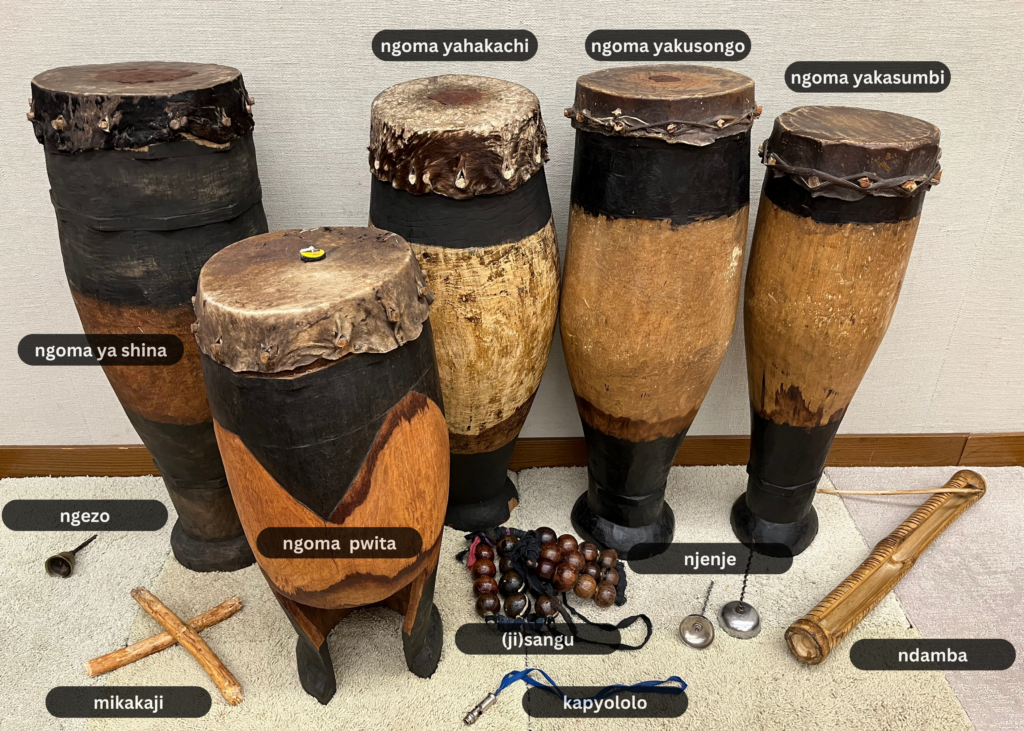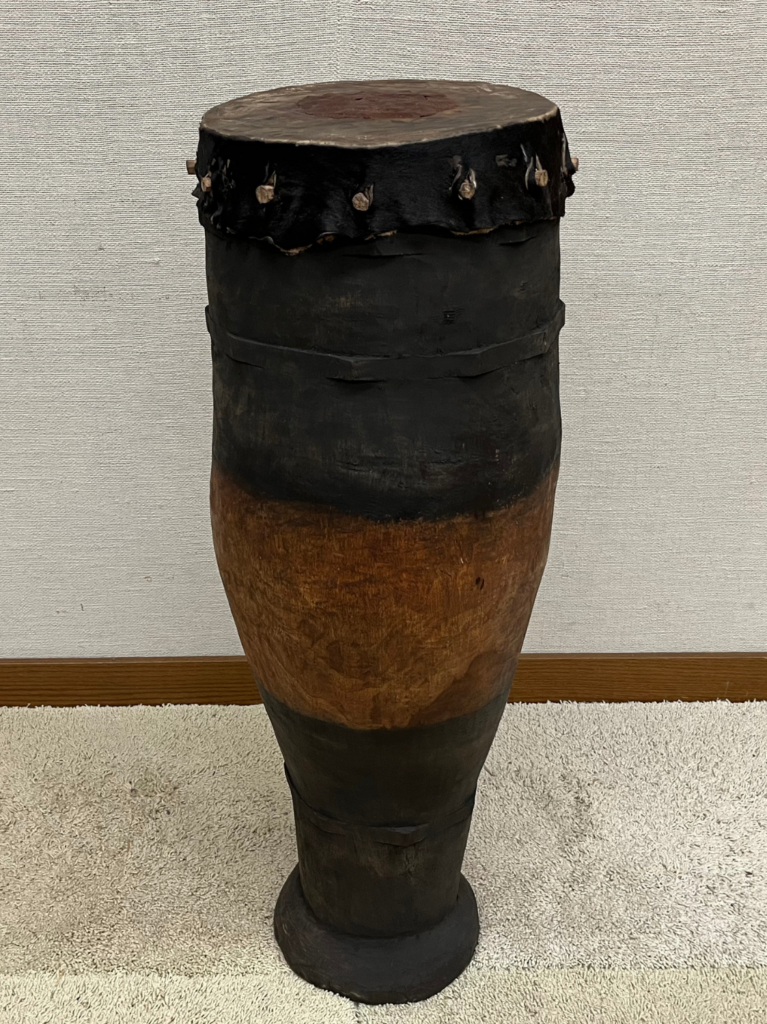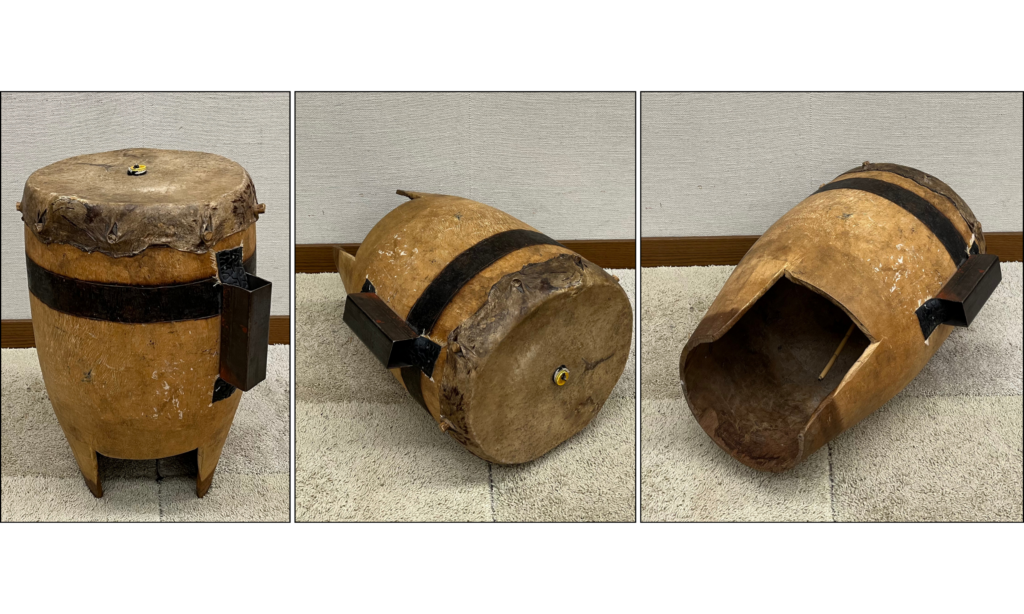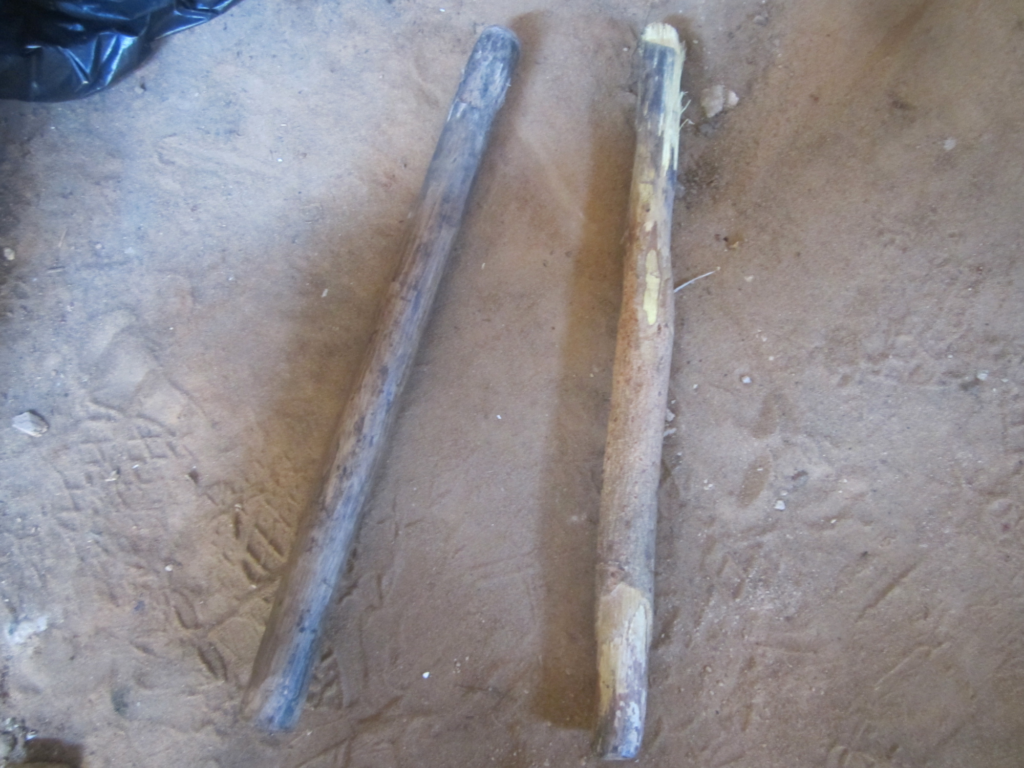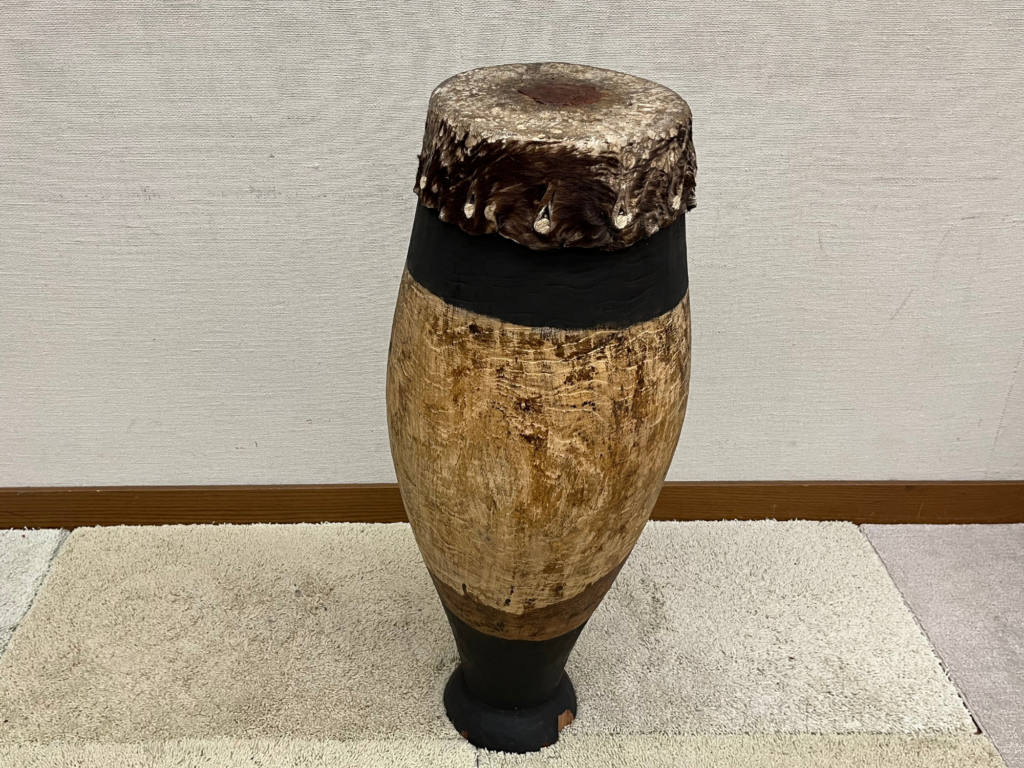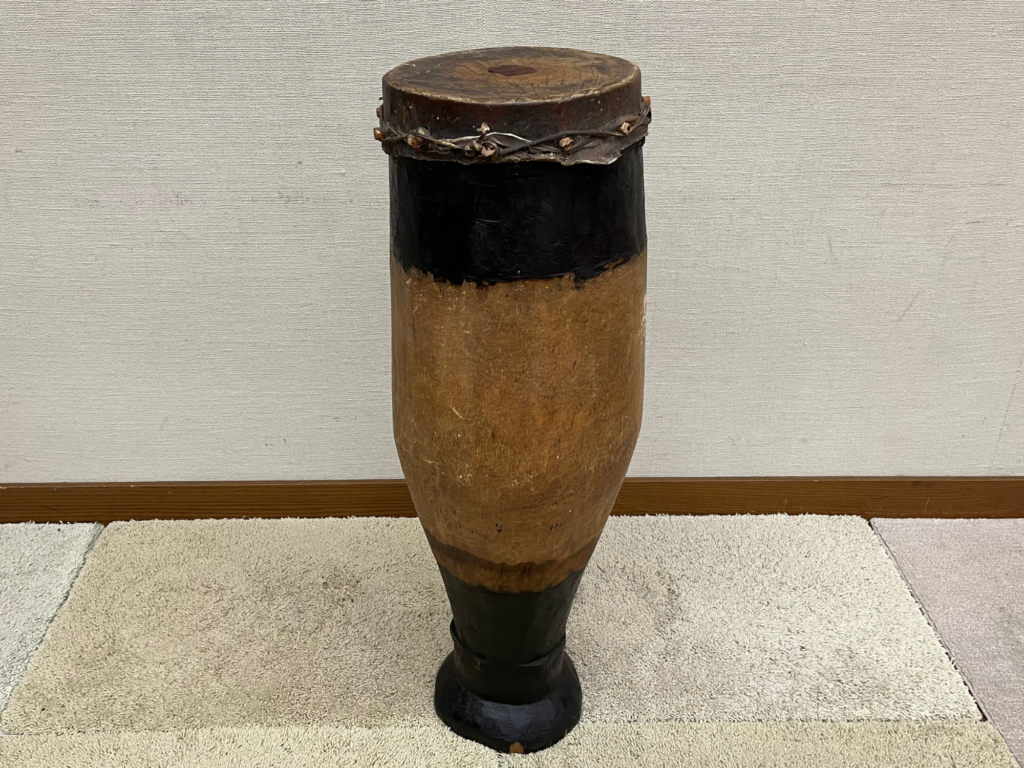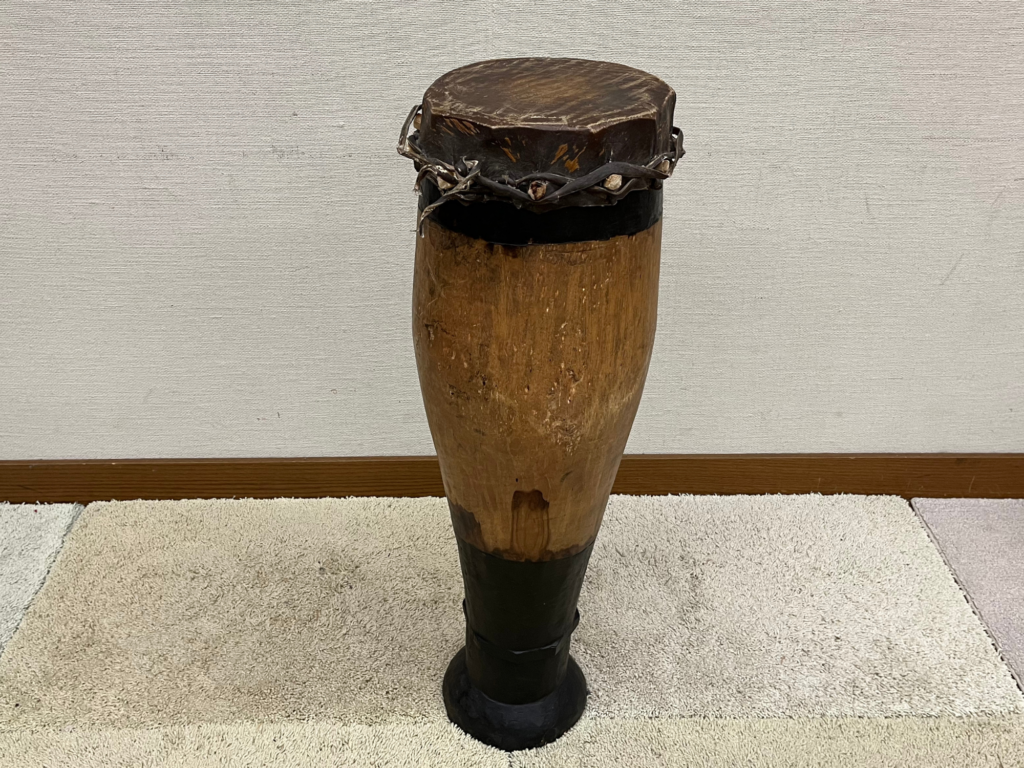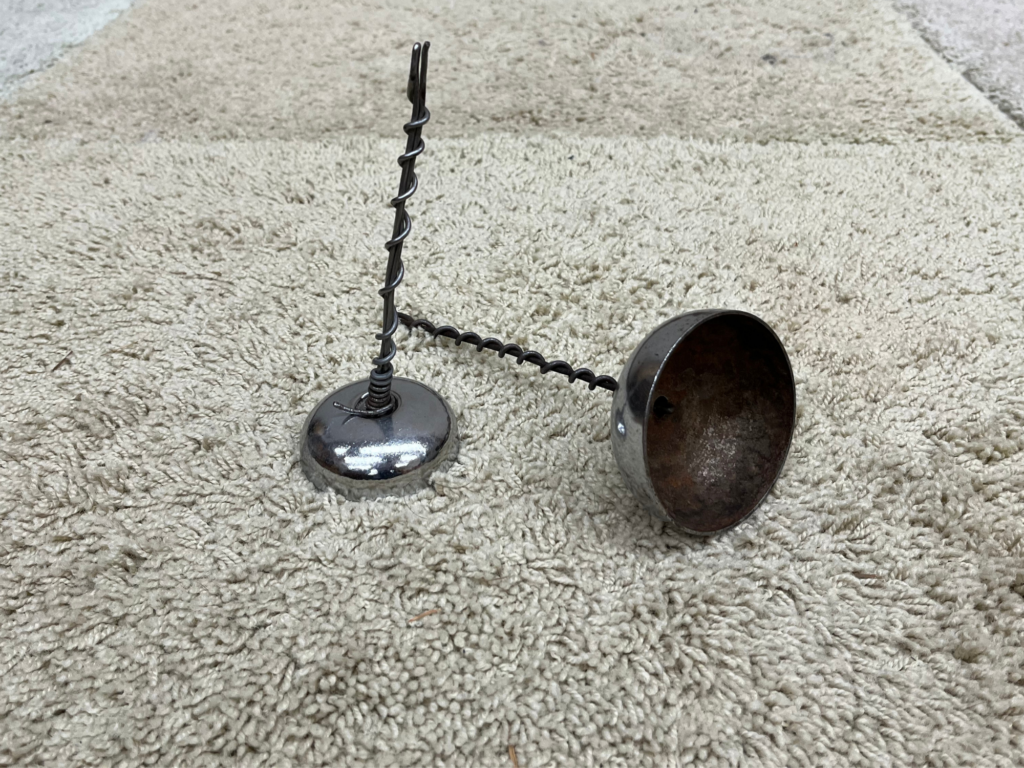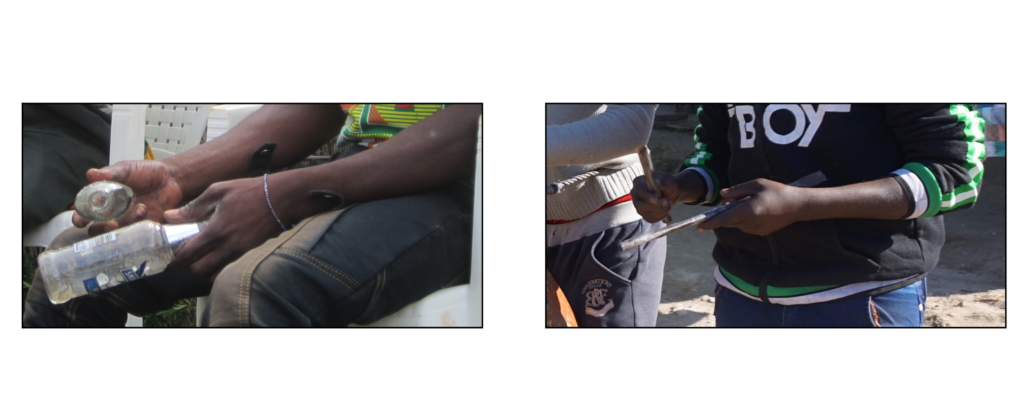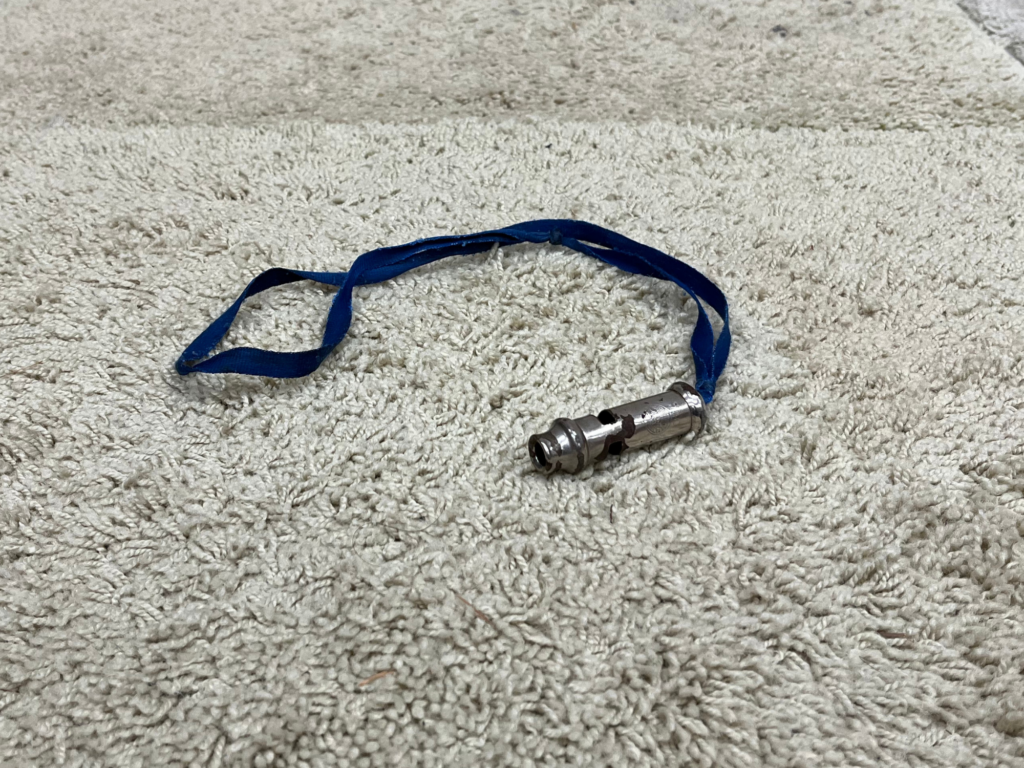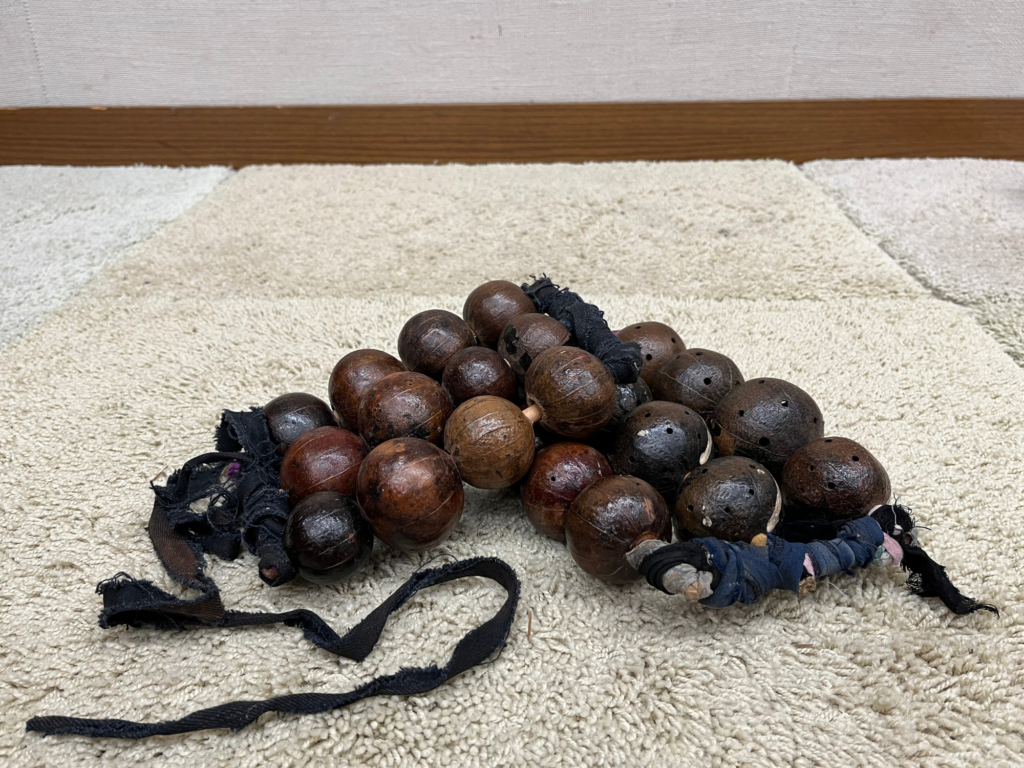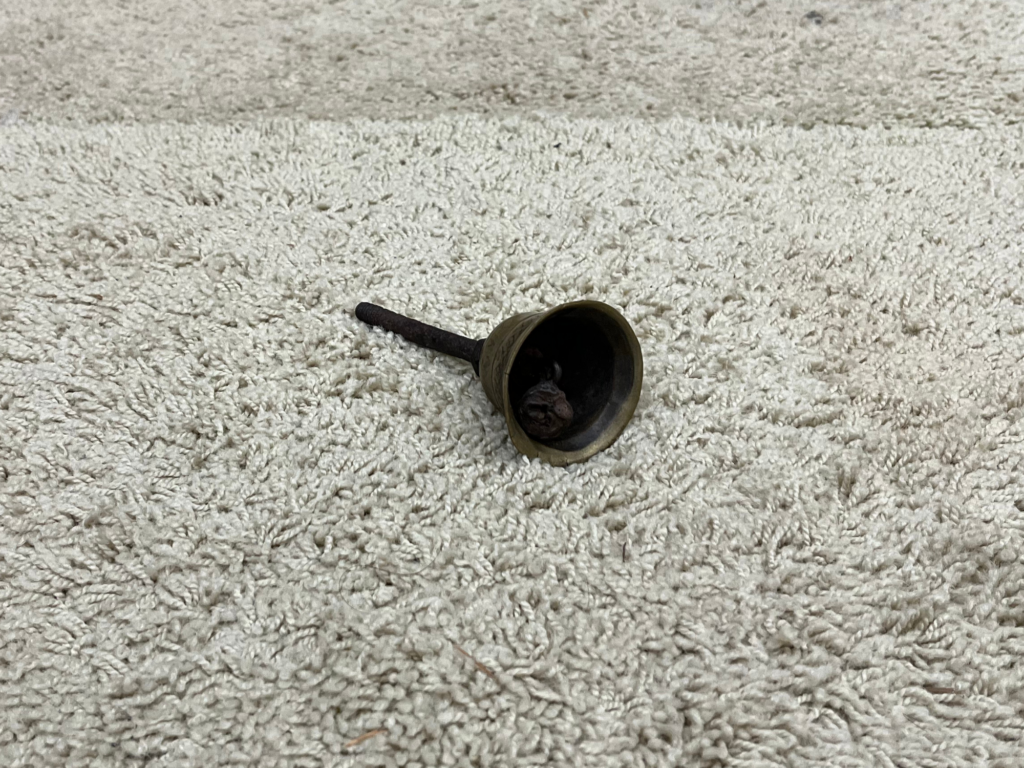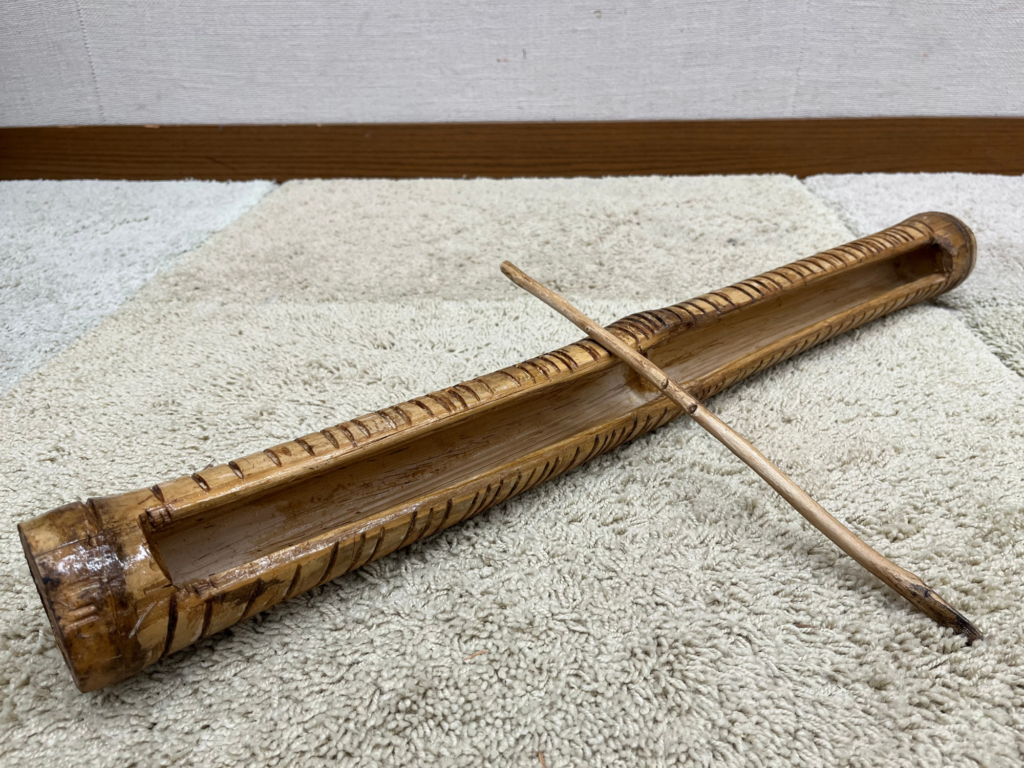Instruments of the Ensemble
Note on Instrument Names
The shina is one of two primary lead drums for makishi music. Of the settings for spirit dances, the shina is usually employed in vilende (large dancing events). When it is the lead drum, a third supporting drum (ngoma yakasumbi) is usually added to the ensemble. In ensembles led by the shina, all drummers perform standing up. To do this, they either wear the drums around their waists (with the help of ropes) or lean the drums against a specially crafted structure (muchapa). The shina has a lower sound than the supporting drums due either to its larger size, higher quantity of applied ulezo, or a combination of these factors. It is often referred to in English as a “buzz drum” due to its timbre. Proficient shina drummers can exploit the drum’s resonant potential, making the shina‘s rumbling vibrations audible from a great distance. Unlike the supporting instruments in the ensemble, the shina can stop, rest, and restart during a piece. Shina performance is improvisatory and responds to dance and other ritual action. Its vocabulary is highly dependent on performer; each drummer may have a different set of phrases they base performance on. The main job of this instrument is to control dance. In vilende, the master drummer may move with the shina away from the rest of the ensemble, towards the dancer. It is not uncommon to see a passionate shina drummer rolling on the ground with his drum while playing!
Alternate names: ntangi, chipwali
Absent outside of the Vaka Chinyama sphere, the ngoma pwita friction drum is a musical icon of Luvale culture. The ngoma pwita is the other primary lead drum for makishi music. It is more commonly featured in recreational and professional makishi performances. The ngoma pwita is the preferred lead drum for likishi lya Mwana Pwevo (the spirit of the young girl) and other sociable makishi who playfully interact with women. When it is the lead drum, it is only joined by 2 supporting drums (ngoma yahakachi and ngoma yakusongo). In ensembles fronted by ngoma pwita, the supporting drummers sit atop their instruments while playing. When present, an additional timeline instrument (njenje) is frequently added. During performance, the mikakaji is usually performed on the body of ngoma pwita by a second drummer. In these circumstances, an additional material (such as a metal bar, metal plate, or dried animal skin) is sometimes attached to the ngoma pwita to both protect the drum and alter the mikakaji‘s timbre. A reed (lihongo) is affixed to the drumhead. To play the pwita, the drummer sits on the ground (securing the instrument with his legs), pushes and pulls the reed with a wet hand, and adjusts pitch on the drumhead with his other hand. During performance, the drummer will usually keep a dish/cup of water nearby or pour water into the cavity of the drum for quick access (Kubik 2008, 358).1 The ngoma pwita has a lower sound than the supporting drums. Due to its unique organology and performance technique, the drum also has a markedly different timbre from the other instruments of the ensemble. Akin to the other lead drum (ngoma ya shina), the pwita can stop, rest, and restart as it pleases during a song. Again like shina, its performance is intricately tied to dance. Though ngoma pwita improvises, there is a set of common phrases drummers often base performance off of.
The mikakaji are present in percussion ensembles regardless of whether shina or ngoma pwita is the lead drum. They are a pair of two similarly sized sticks that are knocked against the side of a drum (Kubik 2008, 358).2 In performance, the strong hand will play a timeline pattern while the weak hand fills in the remaining fastest pulses (Kubik 1972, 173).3 In addition to articulating this important rhythmic phrase, the mikakaji also help push the ensemble’s tempo. They do not stop playing at any moment in a song. With rare exception (such as improvised breaks in dances like Chiyanda or Mwokolo), the mikakaji never vary their parts. In the Kachacha dance, it is common for there to be 2 mikakaji players, each with their own pair. In these settings, one player will perform the timeline (strong hand) and pulse (weak hand) while the other articulates a shuffled pulsation pattern.
Alternate names: mingongo, mikalala
Alternate names: chimpululu, mukundu, mukhundu, mukhundu wa kuvunga, mupundu
Alternate names: chimpululu, mukundu, mukhundu, mukhundu wa kuvunga, mupundu
Alternate names: ngoma yakasulasongo, ngoma yakusongo (when the middle support drum is called ngoma yahakachi)
Alternate names: mingonguela (if fashioned out of bottles), chingongo
Alternate name: ngenzo
- Kubik, Gerhard. 2008. “Central Africa: An Introduction.” In The Garland Handbook of African Music, 2nd ed., 328–61. New York: Routledge.
- Kubik, Gerhard. 2008. “Central Africa: An Introduction.” In The Garland Handbook of African Music, 2nd ed., 328–61. New York: Routledge.
- Kubik, Gerhard. 1972. “Oral Notation of Some West and Central African Time-Line Patterns.” Review of Ethnology 3 (22): 169–76.
- Jordán, Manuel. 2018. “Masks and Musical Instruments.” In Congo Masks: Masterpieces from Central Africa: A Book and Catalogue, 370–73. New Haven: Yale University Press.
- Bastin, Marie-Louise. 1992. “Musical Instruments, Songs and Dances of the Chokwe (Dundo Region, Lunda District, Angola).” Journal of the International Library of African Music 7 (2): 23–44.
- Likumbi Lya Mize Traditional Ceremony. 2024. “WHY LUVALES WEAR JISANGU.” Post. Facebook. https://www.facebook.com/photo/?fbid=945365633668438&set=a.470617554476584.
- Bastin, Marie-Louise. 1992. “Musical Instruments, Songs and Dances of the Chokwe (Dundo Region, Lunda District, Angola).” Journal of the International Library of African Music 7 (2): 23–44.

